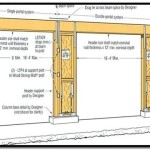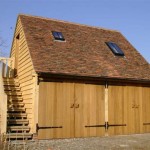Garage Car Stops: An Essential Home Addition
Garage car stops, sometimes referred to as parking blocks or wheel stops, are simple yet crucial additions to any garage space. Their primary function is to prevent vehicles from colliding with walls, tools, storage shelves, or other objects within the garage. These stops act as a physical barrier, signaling the driver when to cease forward movement, thus mitigating the risk of damage and improving the overall safety and organization of the garage environment.
While often overlooked during the planning stages of garage construction or home improvement, the installation of car stops offers a range of benefits that contribute to the longevity of both the vehicle and the garage itself. They provide a clear visual and tactile indication of the parking limit, fostering a more controlled and predictable parking process. Car stops are available in various materials, sizes, and designs, accommodating different vehicle types and garage layouts. Selecting the appropriate car stop depends on factors such as the size of the vehicles typically parked in the garage, the available space, and the desired aesthetic.
The implementation of garage car stops is not limited to residential settings. Commercial parking facilities, dealerships, and repair shops also rely on these devices to maintain order and prevent accidents. The principles of enhancing safety and minimizing property damage remain consistent across various applications.
Preventing Structural Damage and Vehicle Scratches
One of the most significant benefits of garage car stops is their ability to prevent structural damage to the garage itself. In the absence of a defined stopping point, drivers may inadvertently drive too far forward, resulting in a collision with the garage wall. This can lead to dents, cracks, and even more severe structural issues, particularly in older garages or those constructed with less robust materials. Over time, repeated impacts can compromise the integrity of the wall, leading to costly repairs.
Furthermore, car stops protect against damage to items stored within the garage. Garages often serve as storage spaces for tools, lawn equipment, bicycles, and other valuable possessions. A vehicle colliding with these items can cause significant damage, incurring additional expenses for replacement or repair. By providing a clear stopping point, car stops minimize the risk of such collisions and protect the stored items from harm.
Beyond protecting the garage and its contents, car stops also safeguard the vehicle itself. Even minor collisions with the garage wall can result in scratches, dents, or damage to the vehicle's bumper or other exterior components. These damages, while seemingly superficial, can detract from the vehicle's appearance and potentially decrease its resale value. Car stops act as a buffer, preventing the vehicle from making contact with the wall and preserving its cosmetic condition.
The cost of installing car stops is minimal compared to the potential expenses associated with repairing structural damage, replacing damaged items, or repairing the vehicle. Therefore, the investment in car stops is a proactive measure that helps to avoid costly repairs and maintain the overall value of the property.
Enhancing Garage Organization and Safety
Beyond preventing damage, garage car stops contribute significantly to improved garage organization. By consistently guiding the vehicle to the same parking spot, they help to define a designated parking area and create a more orderly and efficient use of the available space. This standardized parking procedure allows for better organization of tools, equipment, and other items stored in the garage, making it easier to find and access them when needed.
A well-organized garage is also a safer garage. Clutter and disorganization can create tripping hazards and impede movement, increasing the risk of accidents. By maintaining a defined parking area, car stops help to keep the garage floor clear and reduce the likelihood of trips, falls, and other injuries. They also ensure that there is adequate space to move around the vehicle safely when exiting or accessing items stored in the garage.
The enhanced organization facilitated by car stops can also contribute to improved visibility. When items are neatly arranged and the parking area is clearly defined, it is easier to see what is stored in the garage and identify any potential hazards, such as spills or leaks. This improved visibility allows for quicker detection of problems and facilitates a more proactive approach to maintenance and safety.
Furthermore, car stops are particularly beneficial for households with multiple drivers or inexperienced drivers. They provide a clear visual cue that helps to guide the driver to the correct parking position, regardless of their skill level or familiarity with the garage space. This can be especially helpful for young drivers or those who are still developing their parking skills.
Understanding Different Types and Installation Considerations
Garage car stops are available in a variety of materials, including concrete, rubber, plastic, and metal. Each material offers different advantages and disadvantages in terms of durability, cost, and ease of installation. Concrete car stops are typically the most durable and long-lasting, but they are also the heaviest and most difficult to install. Rubber car stops are more lightweight and easier to install, but they may not be as durable as concrete stops. Plastic car stops are the most affordable option, but they may be susceptible to damage from extreme temperatures or heavy vehicles. Metal car stops can offer a balance of durability and ease of installation, but they may be more expensive than other options.
The size and shape of the car stop should also be considered when making a selection. The height of the car stop should be sufficient to provide a clear tactile indication of the parking limit, but not so high that it poses a risk of damage to the vehicle's undercarriage. The width of the car stop should be adequate to prevent the vehicle's tires from rolling over it. The shape of the car stop should also be considered, with some models featuring a sloped design that allows the vehicle to roll onto the stop gradually.
The installation of garage car stops is typically a straightforward process that can be completed with basic tools. Most car stops are designed to be secured to the garage floor using anchors or adhesive. The type of anchor or adhesive used will depend on the material of the car stop and the composition of the garage floor. It is important to follow the manufacturer's instructions carefully when installing car stops to ensure that they are securely fastened and will not shift or move over time.
Before installing car stops, it is essential to measure the available space in the garage and determine the optimal location for the stops. The car stops should be positioned far enough away from the wall to prevent the vehicle from colliding with it, but close enough to the door to maximize the available space in the garage. It is also important to consider the turning radius of the vehicle and ensure that there is adequate space to maneuver the vehicle into and out of the parking space.
In addition to the material, size, and installation method, other factors to consider when selecting garage car stops include the aesthetic appeal of the stops and their visibility. Car stops are available in a variety of colors and designs, allowing for a customized look that complements the overall style of the garage. Highly visible car stops, such as those with reflective markings, can be particularly helpful in low-light conditions or for drivers with impaired vision.
Properly installed and maintained garage car stops provide a long-term solution for preventing damage, enhancing organization, and improving safety in the garage. Their relatively low cost and ease of installation make them an essential addition to any home or commercial parking space.

How To Build A Garage Bump Out In 7 Steps Budget Dumpster

Garage Additions For Any Home The House Designers

Everything You Need To Know About Garage Additions Twd Design Build Remodel

3 Easy Ways To Extend Your Garage Plus Cost Estimates

How To Build A Garage Bump Out In 7 Steps Budget Dumpster

How To Convert Garage Into A Living Space Forbes Home

Want An Extra Room Consider Transforming Your Garage Emily Henderson

9 Top Rated Garage Parking Aids For Safe And Easy 2024 Today S Homeowner

3 Easy Ways To Extend Your Garage Plus Cost Estimates

Home Improvement Blog Construction Project Management Services And Books
Related Posts








